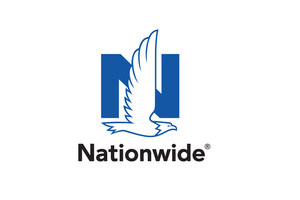COLUMBUS, Ohio, March 10, 2020 /PRNewswire/ -- Data from the latest Health of Housing Markets Report (HoHM Report) from Nationwide economics finds the U.S. housing sector is expected to continue to be a source of growth for the overall economy in 2020, although concerns of an economic slowdown from the global outbreak of the COVID-19 virus is an emerging risk.
Across regions nationwide, housing trends have improved in many local markets with more than half of metro areas showing a positive ranking. While this development positions the sector for a strong performance in 2020, the HoHM Report found there is risk in the form of government-insured and jumbo loans should conditions materially decline.
"While the risk has significantly increased that the coronavirus outbreak will disrupt economic activity, our research indicates that housing will be one of the economy's brightest spots in 2020," said David Berson, Nationwide senior vice president and chief economist. "Strong, underlying housing demand factors, including above-trend household growth, solid job gains and declining mortgage rates, are driving what is looking to be a strong annual performance."
Across the United States, most housing markets show a positive reading with limited pockets of negative performance. The HoHM report finds that nearly 60 percent of the 400 metropolitan statistical areas (MSAs) evaluated achieved a positive housing market ranking in the first quarter. Of the 233 markets with a positive ranking, 214 are classified as plus-one and a further 19 as plus-two (maximum value of plus-four). Across the country, only 29 MSAs fall into the negative category, all of which are performing at minus-one (minimum value of minus-four). There are 138 MSAs in the neutral category.
Government-insured and jumbo loans present a possible risk in the next downturn
Despite the generally positive outlook, Berson noted there are risks on the horizon due to easier underwriting standards for government-insured and jumbo loans.
"FHA and VA loans now comprise more than 23 percent of the nearly 40 million mortgages in the U.S. — the highest share since 2001," Berson said. "While delinquency rates for these government-insured and jumbo loans are low today, deteriorating economic conditions could put these loans at rising risk."
The report's proprietary Leading Index of Healthy Housing Markets (LIHHM) index was 106.1 at the end of 2019, well above the neutral level of 100 and marked the sixth-straight quarterly gain for this metric after rising from 100.7 in the second quarter of 2018. Nationwide's LIHHM is a data-driven view of the near-term performance of housing markets based upon current health indicators for the national housing market and 400 metropolitan statistical areas (MSAs) and divisions across the country. For each MSA, the LIHHM uses local-level data to incorporate the unique characteristics of regional housing markets. The focus of the LIHHM is on the entire housing market's health, rather than a projection of house prices or home sales.
Demand factors driving the positive outlook are led by low mortgage rates, above-trend household formations, the lowest unemployment rates in 50 years, and rising incomes. Serious delinquency rates have declined in each of the last six quarters, falling to a healthy, below 2 percent rate. At the same time, house price gains have accelerated in response to homebuyer demand, with existing home sale supply levels very tight. Still, price growth remains near the long-term average and, with low mortgage rates, housing affordability has remained positive.
Metro areas that have the highest LIHHM forecasts are, in order: Hinesville, Ga.; Detroit-Dearborn-Livonia, Mich.; Cleveland-Elyria, Ohio; Trenton, N. J.; Sebastian-Vero Beach, Fla.; Lake County-Kenosha County, Ill.; Warren-Troy-Farmington Hills, Mich.; Philadelphia; Newark, N. J.; and, Camden, N. J.
By contrast, metro markets that have the least positive LIHHM outlooks are: Yakima, Kennewick-Richland and Walla Walla, Wash.; Cheyenne, Wy.; Odessa, Texas; St. Joseph, Mo.; Hickory-Lenoir-Morgantown, N. C.; Albany, Ore.; Manhattan, Kan.; and, Pocatello, Idaho.
More information about the HoHM Report, including the methodology used, can be found at blog.nationwide.com/housing. The HoHM Report is released on a quarterly basis online and in print.
About Nationwide
Nationwide, a Fortune 100 company based in Columbus, Ohio, is one of the largest and strongest diversified insurance and financial services organizations in the United States. Nationwide is rated A+ by both A.M. Best and Standard & Poor's. An industry leader in driving customer-focused innovation, Nationwide provides a full range of insurance and financial services products including auto, business, homeowners, farm and life insurance; public and private sector retirement plans, annuities and mutual funds; excess & surplus, specialty and surety; pet, motorcycle and boat insurance. For more information, visit www.nationwide.com. Follow us on Facebook and Twitter.
Nationwide, Nationwide is on your side and the Nationwide N and Eagle are service marks of Nationwide Mutual Insurance Company. © 2020
NFM-19278AO
Contact:
Kevin Kemper
(614) 249-6349
[email protected]
SOURCE Nationwide

Related Links
WANT YOUR COMPANY'S NEWS FEATURED ON PRNEWSWIRE.COM?
Newsrooms &
Influencers
Digital Media
Outlets
Journalists
Opted In





Share this article